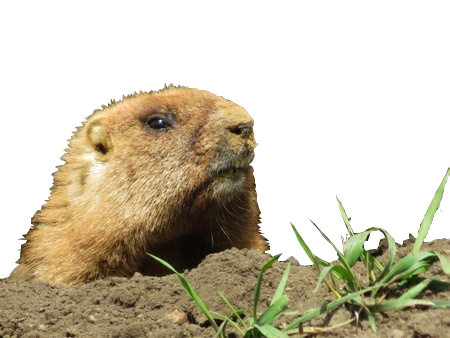Gophers

POCKET GOPHERS (Thomomys spp.)
Description:
Pocket Gophers are burrowing rodents with fine short, dark to light brown fur. Adults are approximately 6 to 12 inches long, depending on the species. They get their name from the fur lines external cheek pouches, or pockets, that they use for carrying food and nesting materials. Pocket Gophers have powerful forequarters and large-clawed front paws making them well suited to digging and tunneling underground. Pocket Gophers have small eyes, small external ears, and highly sensitive facial whiskers.
Biology:
The most common species of Pocket Gopher found in Southern California is the Botta’s Pocket Gopher (Thomomys Bottae). Although they can be seen feeding at the edge of an open burrow, gophers remain mostly underground in their system of tunnels. Mounds of fresh soil are the #1 sign of gopher activity. Typically mounds are crescent or horseshoe-shaped. There can be up to 20 gophers per acre and a single Pocket Gopher burrow system can cover an area of 200 to 2,000 square feet. One gopher can create several mounds in a day and are most active during spring and fall when the soil is moist and easy to dig. However, in irrigated properties such as lawns, flowerbeds, and gardens, digging conditions are usually optimal year-round and mounds can appear any time of year.
Did You Know?
As you might expect, certain occupational hazards come with using your face as a shovel. Gophers are prepared for it though, their small eyes help avoid injury and they have special lips that can close behind their front teeth allowing them to use their teeth to dig without getting a mouthful of dirt!
Impact:
Gophers invade landscapes, lawns, and gardens. They feed on crops, ornamental plants, vines, shrubs, and trees often killing or seriously damaging the plants. A single gopher moving through a flower bed can cause considerable damage in a very short time. Gopher tunnels can divert and carry off irrigation water, leading to soil erosion. Mounds on lawns can interfere with mowing equipment and ruin the aesthetics of well-kept turf grass. Slopes and embankments are vulnerable to serious winter erosion when gophers are allowed to burrow unchecked. Gophers are an economic hazard to any landscaped property.
Solutions:
Regular inspection and early detection is the key to managing gophers. Pestgon is very successful in using a variety of elimination measures to control and protect your property.
Additional Links
